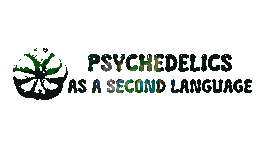Radioactive highs
Disclaimer: The information presented in this article is solemnly displayed for scientific research purposes and as a scientific curiosity. I strongly advise the reader to don’t use radiolabeled substances as they will be harmful to you and who enter in direct contact with the compound.
Radiation has been part of our history whether with a good or bad repertoire, examples that have brought disgrace to humanity such as the bombs of Hiroshima, Nagasaki, and of course Chernobyl, and their use in the oncological field and chemical research.
Researchers such as Alexander Shulgin synthesized alterations of the Amphetamine molecule via DOI (2,5-Dimethoxy-4-iodoamphetamine) and 2C-I with the compound Iodine-125, a radioactive form of the compound Iodine. DOB is another mentionable example with the radioactive form of Bromine, Bromine-77 and hypothetic breadcrumbs blueprinted left from the 2C family, like 2C-A, 2,5-Dimethoxy-4-astatophenethylamine.
On a lesser extent [ 11 C] CIMBI-5 the radiolabeled form of 25I- NBOMe, unlike the compounds previously identified these compounds are formed with the radionated version of Carbon-11, an isotope from of 6C, this compound decays to Boron-11, [11B] an isotope of Boron that produces a nuclear spin in NMR spectroscopy. N1-([11C]-Me)-2-Br-LSD (11 C-MBL) which has a high affinity to the serotonin 5HT2x receptors which also includes a Carbon-11 and various radioionated versions of Lysergic Acid Diethylamide.
Noble gases with anesthetic proprieties like Xenon and its radioactive form Xe-133 [ 133Xe] used in the study of pulmonary function and organ blood flow, the radioisotope Xenon-135 [135XE], produced by the decay from Iodine-135 known for its role as a nuclear poison, this compound had a major role in the Chernobyl disaster, the Xe-135 poisoning accumulated on the fuel rods decreasing the power to 30 MW(Megawatts). The control rods withdrawn according to the increased neutron reactivity, as Xenon-135 is known to be the biggest neutron-absorbing compound, caused the reactor to become thermos-hydraulically unstable, therefore making the thermal power insufficient for neutron flux to burn the Xe-135 causing the following consequences.
Radon is naturally radioactive and predicted to act similar to Xenon as both are heavier than the air found in the atmosphere, although this compound was never tested for its anesthetic purpose as it is known that exposures to the compound may lead to lung cancer, therefore we can only have a prediction of its anesthetic Xenon-like behavior.
The Chernobyl Nuclear Plant is still haunted by radiation yet the locals reveal Babushkas who bravely harvest and feed on radiotrophic fungi soup growing by side of the vegetation surrounding the plant.
Excused to say that not many of these compounds were extensively used as a psychedelic besides 2C-I as the high rated price and scarcity determined them as novel compounds. These substances are often presented as chemical curiosities, have a clinical value or a value under the nuclear industry as there are very few to no recreational usage history.
This exemplification is a simple list of health hazards faced over time, humanity has faced several hazards through its evolution yet, various hazard chemicals are available in the market, substances like TTX (tetrodotoxin), Mercury, Phosphorous and Ciguatoxin, the toxin present in Pufferfish, yet substances known to have significate value on the quality of life are often considered illegal, often the same drugs that are considered illegal are used by impoverished society and minority races, being considered bad and life-destroying.
This Kafkaesque dystopian reality is presented in everyday court, people get arrested for possessing a small amount of Amphetamine that can be sold over the counter just sold by a different name and a label. The Sisyphean task fighting against the unexplainable ban of plants, vegetables, and research chemicals that can provide a better life and different solutions for the unsolved health issues and understanding the mind.
Pihkal : a chemical love story Authors: Alexander T Shulgin; Ann Shulgin; Publisher: Berkeley, CA : Transform Press, 1991. ISBN10:0963009605
Xenon-135 Reactor Poisoning Author Khalid Alnoaimi Stanford University
J. Daintith, Ed., A Dictionary of Chemistry, 6th Ed. (Oxford U. Press, 2008).
R. L. Murray, Nuclear Energy, 6th Ed. (Butterworth-Heinemann, 2008), Chapter 6.
D. C. Tayal, Nuclear Physics (Himalaya Publishing House, 2009), p. 581.
W. M., Stacey, Nuclear Reactor Physics, 2nd Ed. (Wiley-VCH, 2007), p. 213.
“Nuclear Physics and Reactor Theory,” U.S. Department of Energy, DOE Fundamentals Handbook, DOE-HDBK-1019, Vol. 1 and Vol. 2, January 1993, p. 193.
M. V. Malko, “The Chernobyl Reactor: Design Features and Reasons for Accident,” in “Recent Research Activities About the Chernobyl NPP Accident in Belarus, Ukraine and Russia,” ed. by T. Imanaka, Research Reactor Institute, Kyoto University, July 2002, p. 11.5


